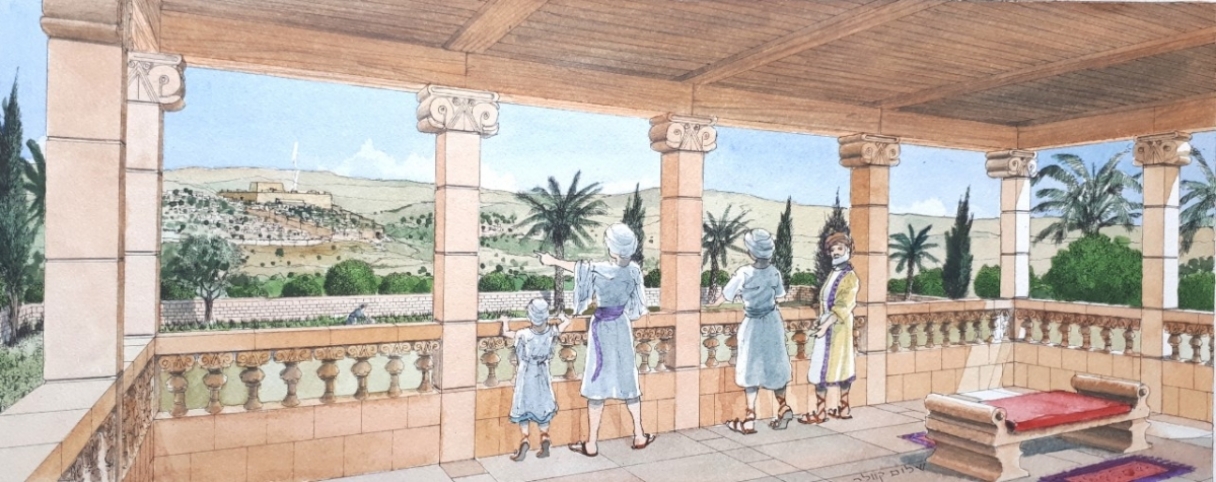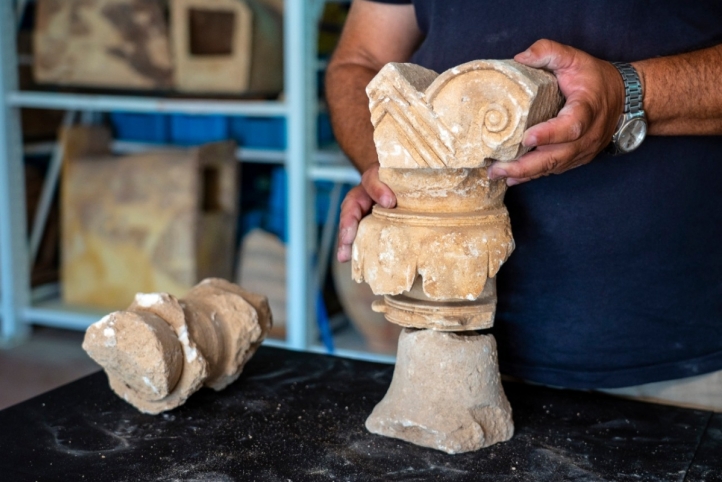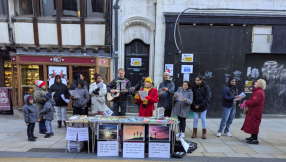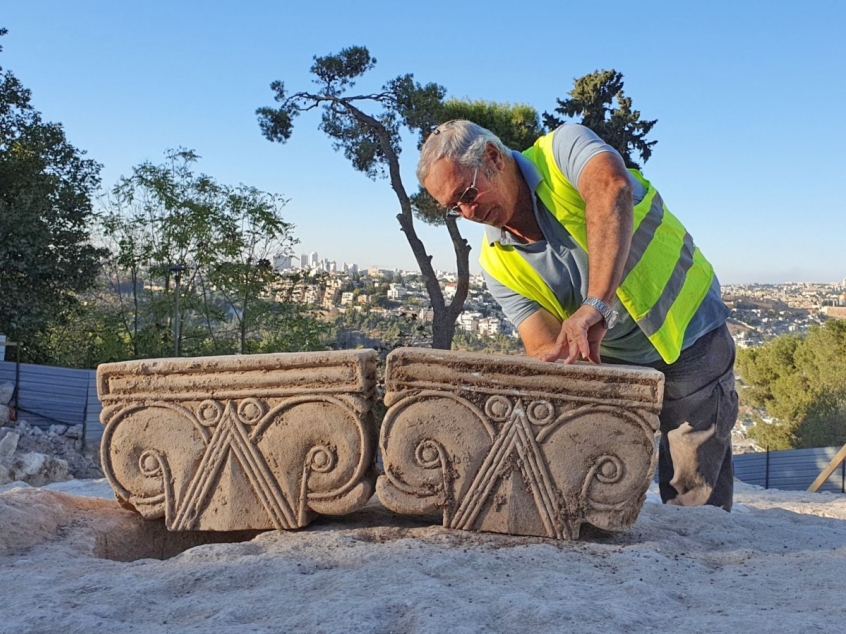
A grand palace dating back to the time of the Kings of Judah has been discovered by archaeologists in Jerusalem.
The site sits on the Armon Hanatziv Promenade and may have been the home of one of the Kings of Judah or a high-ranking family "of nobility and wealth" from the First Temple period.
Among the finds are magnificent column capitals described by the Israel Antiquities Authority (IAA) as "the most beautiful and impressive that have been uncovered to date".
The structure would have been "monumental", with "breathtaking" views of Jerusalem and the Temple.
The IAA said the discovery testified to an "exit from the walls" in First Temple period Jerusalem, suggesting a "period of renewed security felt sometime after the Assyrian siege of Jerusalem ended".
Stone artificacts uncovered at the site are made of soft limestone and feature decorative carvings. They include three complete, medium-sized stone capitals and the fragments of lavish window frames.
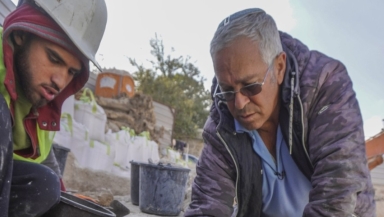
Yaakov Billig, who oversaw the IAA excavation, said: "This is a very exciting discovery. This is a first-time discovery of scaled-down models of the giant Proto-Aeolian capitals, of the kind found thus far in the Kingdoms of Judah and Israel, where they were incorporated above the royal palace gates.
"The level of workmanship on these capitals is the best seen to date, and the degree of preservation of the items is rare."
Unusually, the capitals were found neatly buried one on top of the other, and in excellent condition. By contrast, the rest of the building was destroyed, probably in the Babylonian destruction of Jerusalem in around 586 BC.
"At this point it is still difficult to say who hid the capitals in the way they were discovered, and why he did so, but there is no doubt that this is one of the mysteries at this unique site, to which we will try to offer a solution," Billig said.
The palace was built in the period between the days of King Hezekiah and King Josiah, and point to the restoration of Jerusalem after the devastating Assyrian siege of the city in 701 BC - during the reign of King Hezekiah.
The site, taken together with a palace uncovered in Ramat Rachel and an administrative centre found on the slopes of Arnona, suggests a "new revival" in Jerusalem when people were spreading out beyond the city walls.
"We reveal villas, mansions and government buildings in the area outside the walls of the city," Billig said.
"This testifies to the relief felt by the city's residents and the recovery of Jerusalem's development after the Assyrian threat was over."
